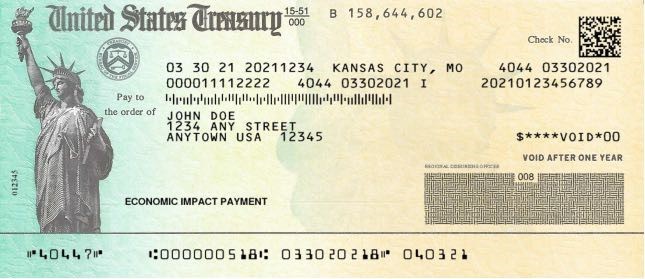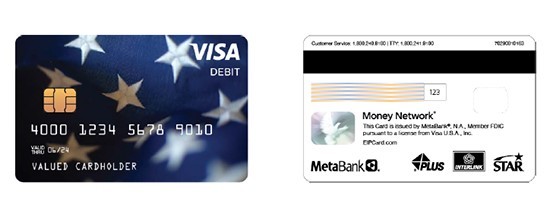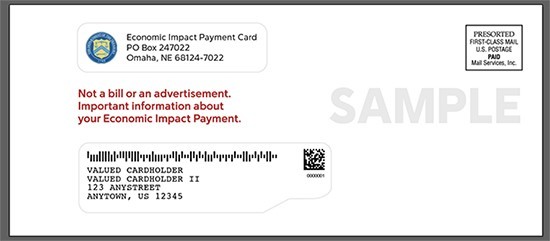 | |||
| |||
News EssentialsThe Newsroom TopicsIRS Resources | Issue Number: IR-2021-62Inside This IssueMore Economic Impact Payments set for disbursement in coming days; taxpayers should watch mail for paper checks, debit cards WASHINGTON – The Internal Revenue Service announced today that the next batch of Economic Impact Payments will be issued to taxpayers this week, with many of these coming by paper check or prepaid debit card. For taxpayers receiving direct deposit, this batch of payments began processing on Friday and will have an official pay date of Wednesday, March 24, with some people seeing these in their accounts earlier, potentially as provisional or pending deposits. A large number of this latest batch of payments will also be mailed, so taxpayers who do not receive a direct deposit by March 24 should watch the mail carefully in the coming weeks for a paper check or a prepaid debit card, known as an Economic Impact Payment Card, or EIP Card. No action is needed by most people to obtain this round of Economic Impact Payments (EIPs). People can check the Get My Payment tool on IRS.gov on to see if the their payment has been scheduled. "The IRS continues to send the third round of stimulus payments in record time," said IRS Commissioner Chuck Rettig. "Since this new set of payments will include more mailed payments, we urge people to carefully watch their mail for a check or debit card in the coming weeks." Following enactment of the American Rescue Plan Act on March 11, the IRS moved quickly to start delivering the third round of Economic Impact Payments. The IRS initiated the first batch of the $1,400 stimulus payments, mostly by direct deposit, on March 12. Today marks the second batch of payments, with additional payments anticipated on a weekly basis going forward. The vast majority of taxpayers receiving EIPs will receive it by direct deposit. In addition, the IRS and the Bureau of the Fiscal Service leveraged data in their systems to convert many payments to direct deposits that otherwise would have been sent as paper checks or debit cards. This accelerated the disbursement of these payments by weeks. Watch the mail for paper checks, EIP Cards Taxpayers should note that the form of payment for the third EIP may be different than earlier stimulus payments. More people are receiving direct deposits, while those receiving them in the mail may get either a paper check or an EIP Card – which may be different than how they received their previous stimulus payments. IRS and the Treasury Department urge eligible people who have not received a direct deposit to watch their mail carefully during this period. Paper checks will arrive by mail in an envelope from the U.S. Department of the Treasury. For those taxpayers who received their tax refund by mail, this paper check will look similar, but will be labeled as an "Economic Impact Payment."
More information about these cards is available at EIPcard.com.
How will taxpayers receive their stimulus payment? Taxpayers with direct deposit information on file with the IRS will receive the payment that way. For those without direct deposit information on file with the IRS, the IRS will use federal records of recent payments to or from the government, where available, to make the payment as a direct deposit. This helps to expedite payment delivery. Otherwise, taxpayers will receive their payment as a check or debit card in the mail. If the direct deposit information is sent to a closed bank account, the payment will be reissued by mail to the address on file with the IRS. The IRS encourages taxpayers to check the Get My Payment tool for additional information. Highlights of the third round of Economic Impact Payments In general, most eligible people will get $1,400 for themselves (those filing joint returns will get $2,800) and $1,400 for each of their qualifying dependents claimed on their tax return. Eligible families will get a payment based on all of their qualifying dependents claimed on their return, including older relatives like college students, adults with disabilities, parents, and grandparents. Unlike the first two payments, the third stimulus payment is not restricted to children under 17. Because these payments are automatic for most eligible people, contacting either financial institutions or the IRS on payment timing will not speed up their arrival. The amount of an eligible individual's EIP3 will be based on the taxpayer's latest processed tax return from either 2020 or 2019. This includes anyone who registered online at IRS.gov using the agency's Non-Filers tool last year or submitted a special simplified tax return to the IRS. If the IRS has received and processed a taxpayer's 2020 return, the agency will instead calculate the amount of the individual's EIP3 based on that return. If a taxpayer's payment is less than the full amount and is based on their 2019 return, they may qualify for a supplemental payment after they file their 2020 return. The IRS will automatically reevaluate their eligibility. If the agency determines that they are entitled to a larger payment or the full payment, it will send them a supplemental payment covering the difference between what they originally received and the larger amount. If the re-evaluated amount is smaller, they won't need to pay back the difference. Aside from filing a 2020 tax return, no action is needed on their part. In addition, the IRS will automatically send EIP3 to people who didn't file a return but receive Social Security retirement, survivor or disability benefits (SSDI), Railroad Retirement benefits, Supplemental Security Income (SSI) or Veterans Affairs benefits. This is similar to the first and second rounds of Economic Impact Payments. Social Security and other federal beneficiaries will generally receive this third payment the same way as their regular benefits. The IRS is working directly with the Social Security Administration, the Railroad Retirement Board, and the Veterans Administration to obtain updated 2021 information for recipients to ensure it is sending automatic payments to as many people as possible. More information about when these payments will be made will be provided on IRS.gov as soon as it becomes available. While payments will be automatic for many people based on their federal benefits information, some may need to file a 2020 tax return, even if they don't usually file, to provide information the IRS needs to send payments for any qualified dependent. People in this group should file a 2020 tax return to be considered for an additional payment for their dependent as quickly as possible. Special reminder for those who don't normally file a tax return People who don't normally file a tax return and don't receive federal benefits may qualify for these stimulus payments. This includes those experiencing homelessness and others. If you're eligible and didn't get a first or second Economic Impact Payment (that is, an EIP1 or EIP2) or got less than the full amounts, you may be eligible for the 2020 Recovery Rebate Credit, but you'll need to file a 2020 tax return. See the special section on IRS.gov: Claiming the 2020 Recovery Rebate Credit if you aren't required to file a tax return. Free tax return preparation is available for qualifying people. The IRS reminds taxpayers that the income levels in this new round of stimulus payments have changed. This means that some people won't be eligible for the third payment even if they received a first or second Economic Impact Payment or claimed a 2020 Recovery Rebate Credit. Payments will begin to be reduced for individuals making $75,000 or above in Adjusted Gross Income ($150,000 for married filing jointly). The payments end at $80,000 for individuals ($160,000 for married filing jointly); people above these levels are ineligible for a payment. More information is available on IRS.gov. Thank you for subscribing to the IRS Newswire, an IRS e-mail service. If you know someone who might want to subscribe to this mailing list, please forward this message to them so they can subscribe. This message was distributed automatically from the mailing list IRS Newswire. Please Do Not Reply To This Message. | ||
Monday, March 22, 2021
IR-2021-62: More Economic Impact Payments set for disbursement in coming days; taxpayers should watch mail for paper checks, debit cards
Subscribe to:
Post Comments (Atom)




No comments:
Post a Comment